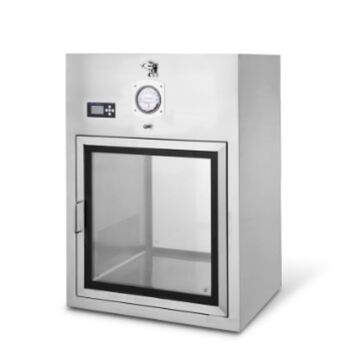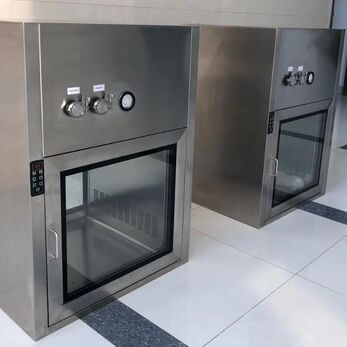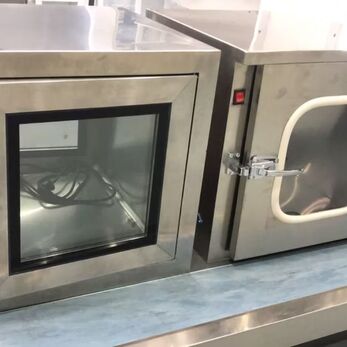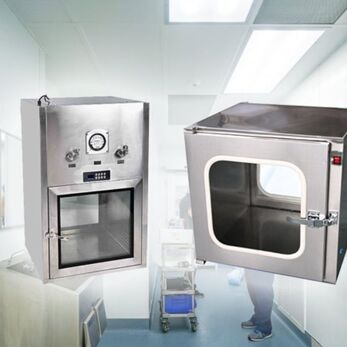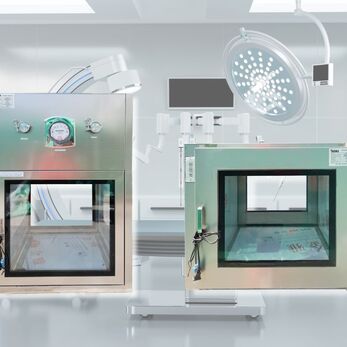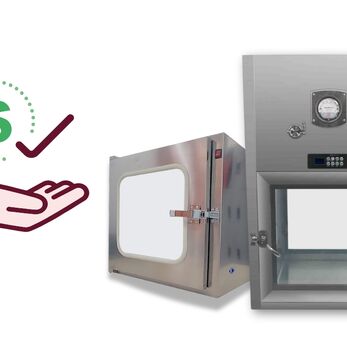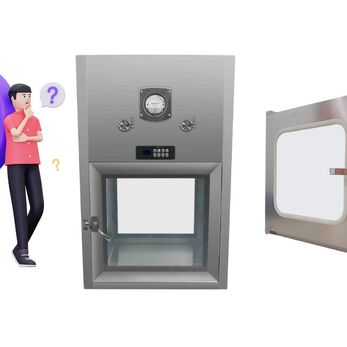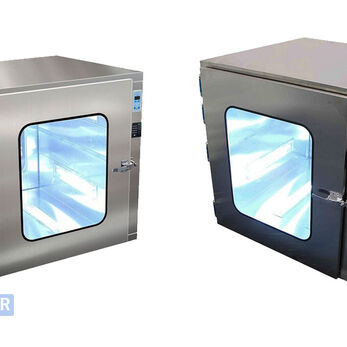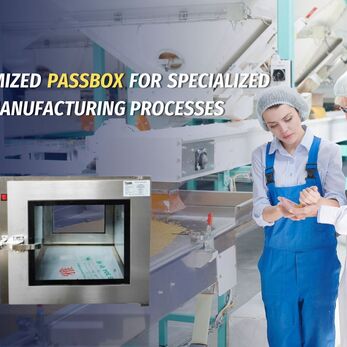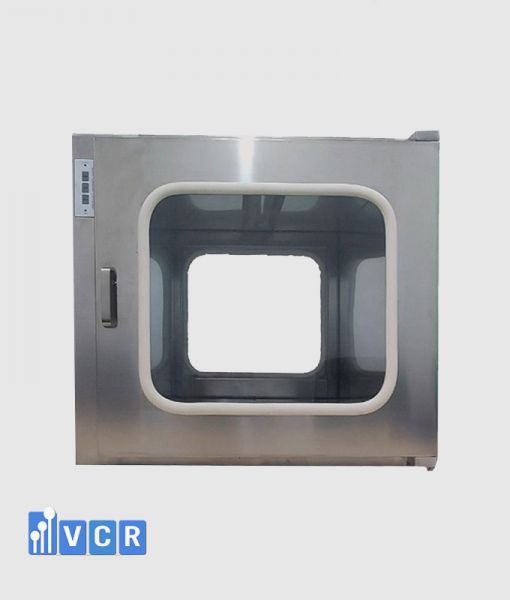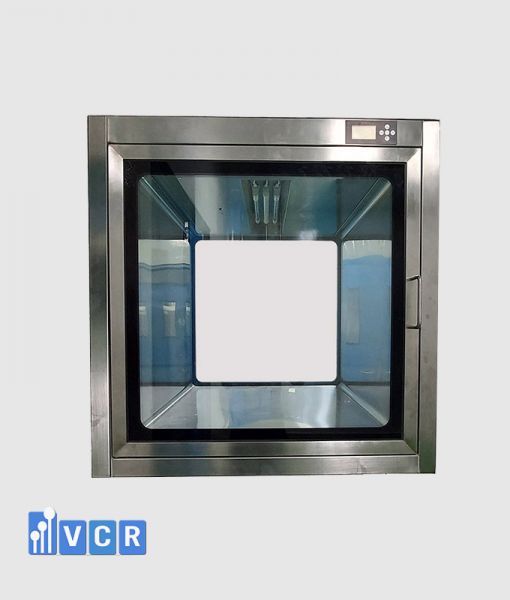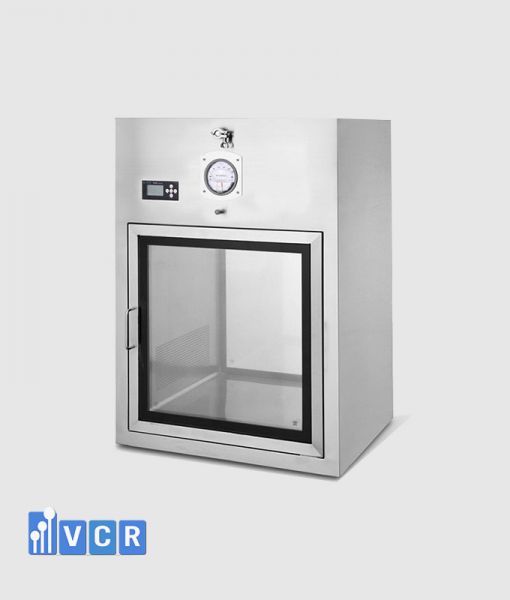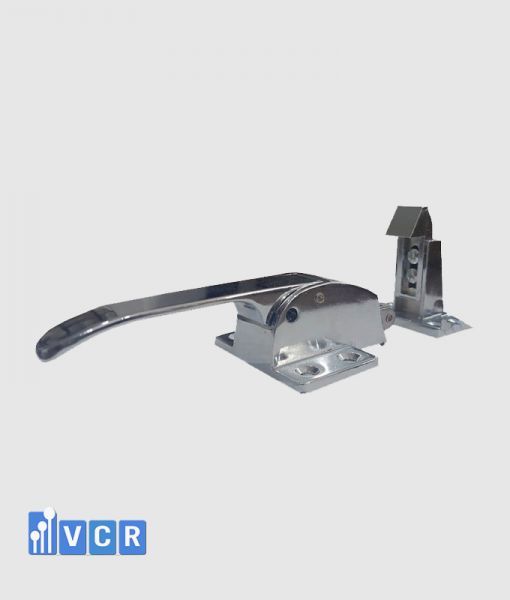In food production, the Pass Box serves as an “intermediate door” between clean and non-clean areas, helping to prevent cross-contamination and maintain a stable cleanliness level. This device not only optimizes the transfer of materials but also contributes to meeting HACCP and ISO 22000 standards for food safety.
- 1. What is a Pass Box?
- 2. Why is a Pass Box important in the food industry?
- 3. HACCP Standards in Food Production
- 4. How Does a Pass Box Help Meet HACCP Requirements?
- 5. Practical Applications of a Pass Box in Food Factories
- 6. Suggestions for Selecting a Pass Box for a Food Factory
- 7. FAQ – Frequently Asked Questions
This article from VCR will answer the question “Pass Box in food production: how does it meet HACCP?”, covering the role of the Pass Box in cross-contamination control and how to select equipment suitable for HACCP standards.
1. What is a Pass Box?
A Pass Box is a transfer device installed between two areas with different clean levels in a food production plant. Its main objective is to transfer supplies, raw materials or finished products without interrupting or causing cross-contamination between those areas.
The Pass Box functions like an “intermediate door” – helping to limit direct door openings between rooms, thereby maintaining stable cleanliness in accordance with the strict hygiene requirements of food production.
Types of Pass Box
Pass Boxes are divided into two main types, depending on usage requirements and the level of cleanliness that needs to be controlled:
| Type | Specification | Application |
|---|---|---|
| Static Pass Box | Does not integrate an air filtration system; mainly used to transfer supplies between areas with the same clean level or a slight difference. | Warehouse to preprocessing; preprocessing to packaging |
| Dynamic Pass Box | Integrates a blower and HEPA filter system to create a clean air flow, preventing dirt from entering during the transfer process. | Between non-clean zone and high-clean zone such as sterile packaging, formulation area |
Roles of the Pass Box in the food production line include:
-
Preventing cross-contamination: Minimising the risk of spread of microorganisms, dust when transferring raw materials or finished products.
-
Optimising production process: Allows for efficient material transfer without opening the clean room door, reducing time and manual operations.
-
Meeting HACCP and ISO 22000 standards: Forms part of the environmental control strategy, helping the factory maintain Critical Control Points (CCPs) related to hygiene and food safety.
-
Protecting clean areas: Minimises uncontrolled airflow intrusion into high-hygiene required production areas such as sterile packaging zones.

Read more: Pass Box Maintenance in Hospital Cleanrooms: Ensuring Sterility and Longevity
2. Why is a Pass Box important in the food industry?
In a food manufacturing environment — where high standards of hygiene, safety and traceability are required — controlling cross-contamination and maintaining cleanliness levels are always top priorities. The Pass Box acts as a closed “handover station”, connecting different areas efficiently without disrupting the contamination control system.
Preventing cross-contamination between areas
One of the common risks in food manufacturing is cross-contamination — when microorganisms, allergens or foreign particles from non-clean zones enter clean zones via materials, personnel or air. The Pass Box serves as an intermediate chamber, helping to:
-
Avoid direct movement between areas with different cleanliness levels.
-
Reduce the risk of contamination from personnel to product.
-
Limit microorganism dispersion when opening/closing production room doors.
Maintaining cleanliness in tightly controlled areas
Areas such as formulation, packaging or finished-product processing usually require a higher level of cleanliness than raw material storage or preprocessing zones. Using a Pass Box ensures:
-
Only one door opens at a time (via interlock system) to prevent pressure loss and clean air leakage.
-
Some Pass Boxes integrate UV sterilisation or HEPA filtration to decontaminate material surfaces before entering the clean zone.
-
Reduced risk associated with manual operations such as door openings or material transfers.
Optimising material flows & reducing direct contact
Beyond contamination control, the Pass Box also improves operational efficiency:
-
Shortens material transfer time between stages.
-
Reduces the number of staff movements between zones.
-
Decreases contact between person–goods–air, increasing hygienic safety.
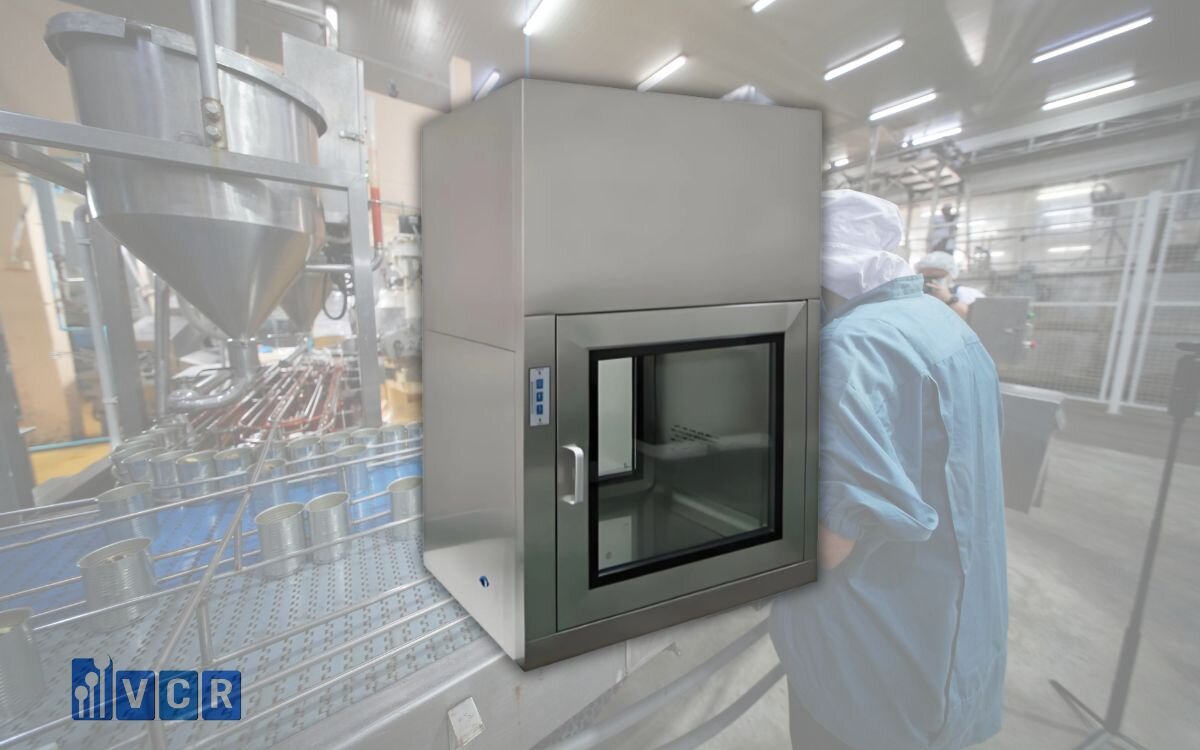
Read more: Pass Box Qualification in Pharmaceutical Cleanrooms: Ensuring Precision and Compliance
3. HACCP Standards in Food Production
Short overview of HACCP
HACCP standard (Hazard Analysis and Critical Control Points) is a globally applied food safety management system. Its main objective is to prevent hazards affecting food quality and safety rather than just inspecting after a problem has occurred.
This system applies a preventive principle throughout the entire production chain — from input materials to finished product output. In the food industry, HACCP plays a key role in ensuring products are safe for consumer health.
The 7 basic principles of HACCP
-
Hazard Analysis: Identify biological, chemical, physical hazards in the production process.
-
Identify Critical Control Points (CCPs): Determine steps where control measures can be applied to prevent or remove hazards.
-
Establish critical limits for each CCP: Set maximum/minimum thresholds for hazard control.
-
Establish a monitoring system for CCPs: Define how to check, frequency, responsible person.
-
Establish corrective actions: If a CCP goes beyond limits, corrective steps must be taken promptly.
-
Establish verification procedures: Periodically check the effectiveness of the HACCP system.
-
Establish record-keeping and documentation: Fully document the entire control process for traceability and proof of compliance.
CCPs related to environment & auxiliary equipment
In real food production, aside from raw materials and processing steps, the production environment and auxiliary equipment can also be sources of hazards if not controlled properly. Some common CCPs related to these factors include:
-
Air in the clean zone: Needs to control dust, microorganisms in the air via HEPA filtration, positive pressure, unidirectional airflow.
-
Supply transfer equipment (such as Pass Box): If not correctly cleaned/operated, a Pass Box may become a cross-contamination point of microorganisms, chemicals or dust.
-
Surfaces that contact food: Equipment must be made of materials easy to clean (Inox 304/316), non-rusting, no dead corners.
-
UV sterilisation lights: Used to eliminate microorganisms in intermediate areas; requires periodic performance checks.
-
Pressure and airflow between zones: Ensures air from dirty zones does not infiltrate clean zones.
-
Maintenance and cleaning operations of equipment: If not complied with the cleaning procedure, hazards from outside may be brought into the production area.
Identifying and controlling these CCPs related to environment and equipment helps ensure comprehensive food safety, and complies strictly with HACCP and other quality management systems such as ISO 22000.
Read more: Optimizing Dynamic Pass Box Operations: Comprehensive Use Guidelines
4. How Does a Pass Box Help Meet HACCP Requirements?
In food production processes, complying with HACCP (Hazard Analysis and Critical Control Points) standards requires rigorous control at points where hygiene and food safety hazards are likely to occur. The Pass Box plays a key role in supporting factories to effectively implement CCPs related to cross-contamination, equipment hygiene and traceability.
Ensuring hygiene and contamination control
Pass Boxes in food factories are typically constructed from Inox 304 or 316 — materials that resist corrosion, meet food hygiene standards and are easy to clean. The device surface is finished smoothly, does not accumulate dust, and can be disinfected with sanitising solutions.
Additionally, the sealed-design door edges have rubber gaskets that prevent air and dust infiltration between zones. This is an effective solution to control cross-contamination risk during material transfers.
Strict monitoring and traceability
Modern Pass Boxes may integrate operational control features such as:
-
Interlock system between doors: prevents both doors from opening simultaneously, ensuring unidirectional airflow.
-
UV sterilisation light: eliminates microorganisms on material surfaces during transfer.
-
Timer for sterilisation: ensures that the UV light has run for the required period.
-
Door sensors and alarms: enhance real-time monitoring.
These features help factories to easily establish and maintain CCPs, and also support traceability when assessing risks or investigating incidents.
Clear separation of flows for raw materials – finished products
One of the important requirements of HACCP is separating the flow of raw materials and finished product transfers to avoid contamination. A Pass Box is installed at transfer points between:
-
Raw/unprocessed area → clean processing area
-
Packaging zone → finished product warehouse
-
Raw material zone → formulation area
Using a Pass Box in these locations helps establish clearly defined hygiene boundaries, and maintain different cleanliness levels in the factory.
Minimising manual interventions
The Pass Box helps reduce direct manual handling when transferring materials between zones. Instead of staff opening clean room doors manually or pushing carts directly through, the Pass Box enables a closed transfer, limiting contact and reducing contamination risks from human elements.
Furthermore, automation of opening/closing via sensors, alarms or standard procedures also enhances consistency, meeting process control requirements under HACCP and ISO 22000.
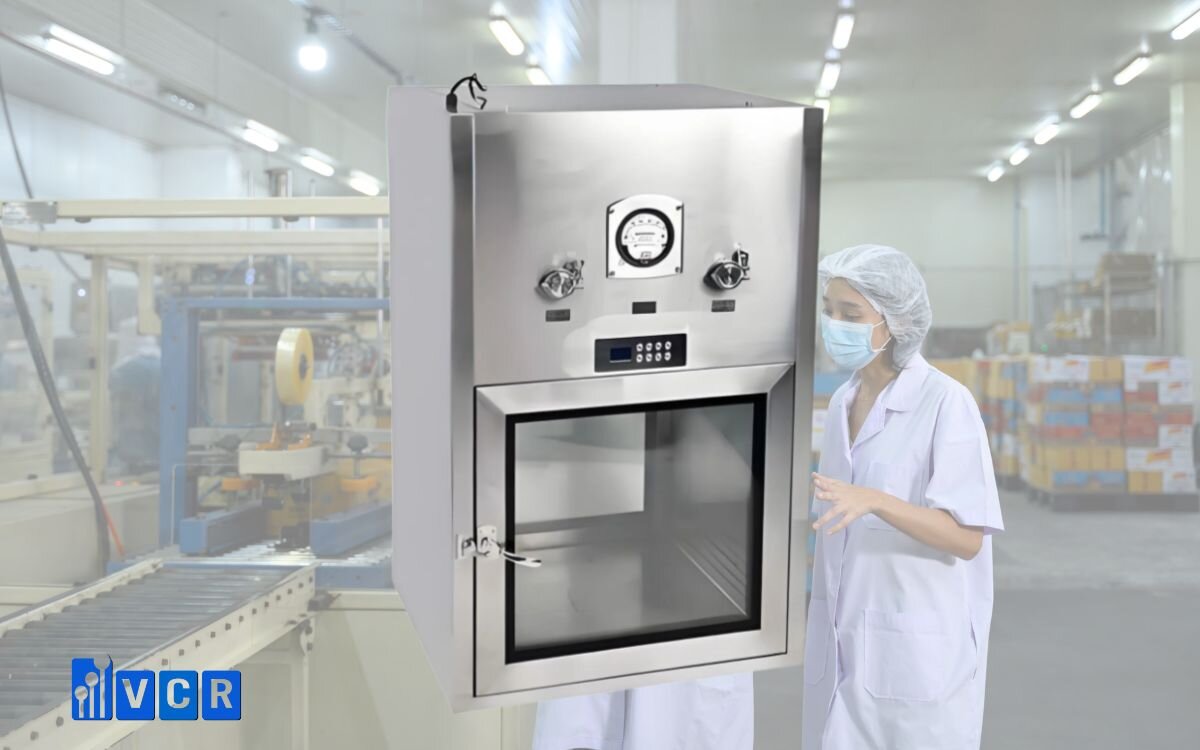
Read more: Optimizing Pass Box Requirements in Negative Pressure Environments
5. Practical Applications of a Pass Box in Food Factories
In modern food manufacturing plants, a Pass Box is not just an auxiliary device but a key component in maintaining hygienic conditions, preventing cross-contamination and ensuring efficient material transfer. Below are practical applications of the Pass Box in food production environments:
Common installation locations
-
Between raw material warehouse and preprocessing area: This is a critical entry transfer point. Using a Pass Box here helps reduce dust and microorganisms from the warehouse entering the preprocessing zone.
-
Between the preprocessing area and packaging area: Prevents bacteria or foreign bodies from less-clean zones entering near-finished product zones.
-
Between the testing / quality-control (QC) area and clean zone: In factories with QC labs, the Pass Box supports sample transfers without opening a large door and causing cross-contamination.
Correct placement helps ensure compliance with the segregation flow “clean vs non-clean” in the HACCP system.
Standard operation procedure example for a Pass Box
To maximise effectiveness of the Pass Box, the factory needs to establish a standard operating procedure. An example process includes:
-
The sending zone employee: places the order or materials in the Pass Box and closes the outer door.
-
Sterilisation: If the Pass Box includes UV light or air-blowing system, it is activated for the set duration.
-
Check signals: Indicator light or alarm lights when sterilisation is complete and the inner door may be opened.
-
Receiving zone employee: Opens the inner door and retrieves the materials, ensuring the two doors are not opened simultaneously to prevent cross-contamination.
-
Record-keeping: Depending on HACCP regulations, the operation may require logging the action in a tracking book.
Following the correct procedure ensures both food safety and production efficiency.
Combined with other equipment
To enhance environmental control, the Pass Box is often integrated with other devices such as:
-
Air Shower: installed at personnel entry ways to dislodge dust and microorganisms before entering clean zones.
-
Clean work table: used in packaging areas, maintaining sterile working zones.
-
Sampling booth: used in input material sampling procedures, coordinated with the Pass Box to transfer samples from the warehouse to QC without opening directly.
The synchronized combination of these devices helps ensure that the entire production process complies strictly with hygiene standards, especially when implementing HACCP or ISO 22000 systems.
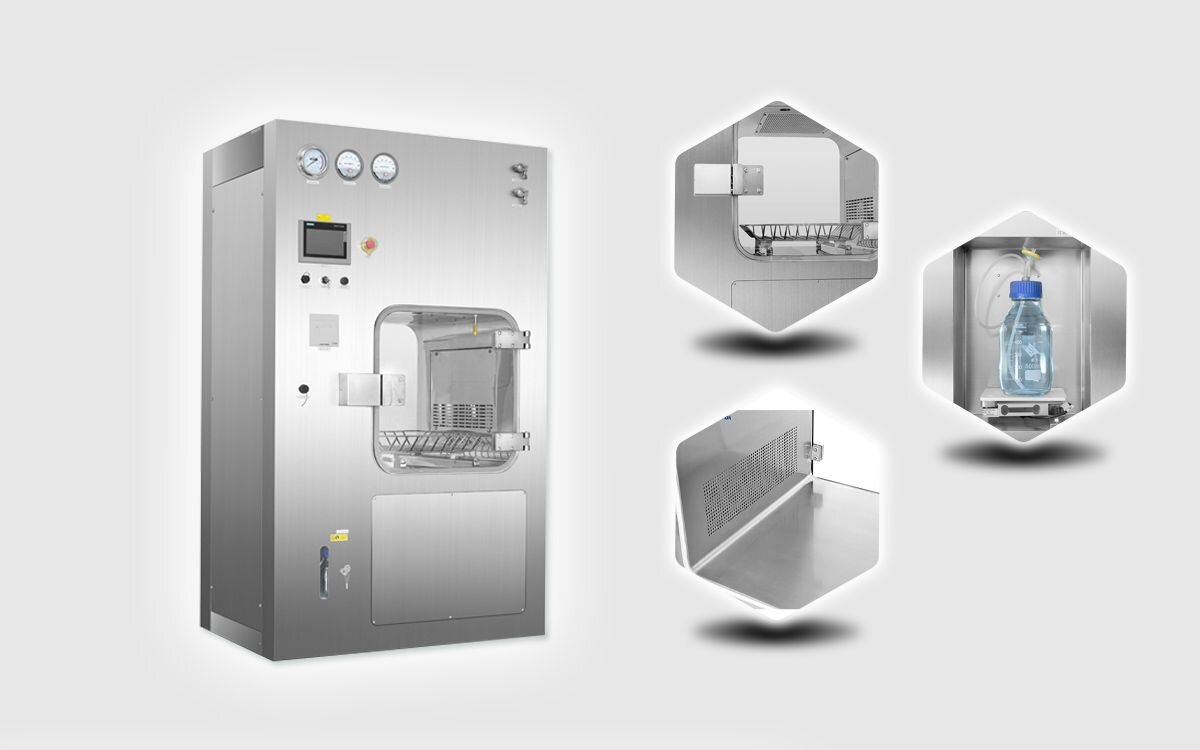
Read more: Latest price list of Passbox used in food factory
6. Suggestions for Selecting a Pass Box for a Food Factory
Choosing the appropriate Pass Box not only helps optimise operations, but also ensures compliance with hygiene and food safety standards such as HACCP, ISO 22000. Below are important factors to consider:
Select the type of Pass Box appropriate for the usage
Based on hygiene control requirements and installation location, you can choose one of the two common types:
-
Static Pass Box: Usually used in areas with moderate control, where clean air flow isn’t necessary. Suitable for factories on a limited budget or where high cleanliness levels are not required.
-
Dynamic Pass Box: Integrates HEPA blower to create clean air flow, preventing reverse contamination from the environment. Suitable for areas requiring strict cleanliness levels such as sterile packaging or filling zones.
Additionally, some Pass Boxes may be equipped with:
-
UV sterilisation lights: to eliminate bacteria on items during transfer.
-
Door sensors, timer, alarm: enhance operational safety and convenience.
Prioritise technical standards & equipment durability
To ensure long-term operation and ease of maintenance, the Pass Box should meet the following criteria:
| Criterion | Suggestion |
|---|---|
| Material | Inox 304 or 316 – non-rusting, easy to clean, corrosion resistant |
| Door | Tempered glass door, with rubber gasket for airtight sealing |
| Control system | Electronic interlock to ensure only one door opens at a time |
| Maintenance | Design that allows easy remove/replace filter, UV light replacement |
| Certification | Equipment with CE, ISO or clean room equipment compliance certification |
Reference real-world models from compliant factories
Surveying actual installations helps avoid mis-layout of material flows. Some reference models include:
-
Installed between raw material warehouse and preprocessing: helps block contamination from incoming materials.
-
Between preprocessing and clean processing: ensures clear segregation of clean vs non-clean zones.
-
Linking the Pass Box with internal monitoring or data-tracking systems: enhances monitoring and process review capabilities.
Referring to food factories that have achieved HACCP or ISO 22000 certification gives you an overview of suitable device type, installation locations and operating procedures best suited to your plant.
Read more: Supplier of Food‑Grade Cleanroom Pass Boxes Meeting ISO 22000 Standard
7. FAQ – Frequently Asked Questions
Is a Pass Box mandatory in a food factory?
The installation of a Pass Box is not always a legal requirement. However, for food production factories applying management systems such as HACCP, ISO 22000 or FSSC 22000, a Pass Box is virtually an indispensable device to ensure Critical Control Points (CCPs) in the production process.
Specifically, a Pass Box helps:
-
Minimise the risk of cross-contamination when moving raw materials and finished products between zones.
-
Maintain stable clean environmental conditions, suitable for controlling microorganisms, dust or foreign particles.
-
Support verification and monitoring of CCPs thanks to features like interlock doors, UV lights or status-alarm systems.
Therefore, in practice, modern food factories proactively integrate Pass Boxes into the layout of the plant from the beginning or during renovations.
How to determine the position for installing a Pass Box?
Determining the installation position of a Pass Box depends on:
-
The flow of material/raw materials in the factory.
-
Hygienic zoning according to GMP or HACCP standards.
-
The level of cross-contamination risk between zones.
Common locations for Pass Box installation include:
-
Between the raw material receiving area and preprocessing area.
-
Between processing and finished product packaging/storage zones.
-
In the sample-taking or QC area.
To determine precisely, the enterprise should:
-
Survey the current material flow in the factory.
-
Consult with a layout design expert for HACCP-compliant factory zoning.
-
Build a hygienic flow‐chart before installing equipment.
Does a Pass Box require periodic maintenance?
Yes. Periodic maintenance of a Pass Box is necessary to:
-
Ensure stable, safe operation of the equipment.
-
Maintain the effectiveness of contamination and cross-contamination prevention.
-
Extend lifespan of components such as fan, UV light, HEPA filter.
Depending on the type of Pass Box (static or dynamic), the maintenance items may include:
-
Checking and cleaning the Inox surface, especially door handles and rubber gasket.
-
Checking the interlock system between two doors.
-
Replacing the HEPA filter (for dynamic Pass Box).
-
Checking the UV light (if present) for operating time and sterilisation performance.
Maintenance frequency is generally 1–3 months per cycle, depending on usage frequency and operational environment.
If you are designing or upgrading a food factory, the Pass Box is an essential solution to meet HACCP standards, help control cross-contamination and improve operational efficiency.
Contact VCR for:
-
Advising on the appropriate type of Pass Box for each production area.
-
Suggestions on installation locations based on hygienic zoning.
-
Quotation and support for equipment layout design in the factory.
Contact:
Hotline: 090.123.9008
Email: [email protected]
Website: https://passbox.vn/
Dat VCR





